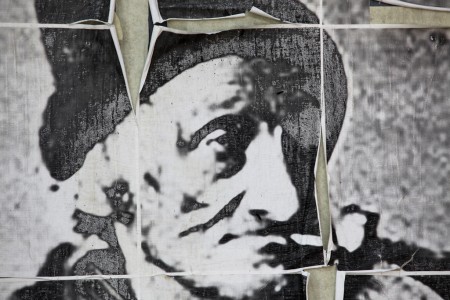In the course of reading Richard Rhodes’ The Making of the Atomic Bomb, I have learned more about the history of anti-Semitism than from any other source I can recall. I wasn’t exposed to it in literature until recently and I don’t remember hearing anything much about it before high school. There, I recall it being treated as basically an exclusively Nazi phenomenon that arose in the interwar years and was basically crushed after the Nuremburg Trials (though there are worrisome re-emergences in the European far right).
As such, it was surprising to read a history going back to the 6th century. Rhodes describes the experience of Jews in the Roman Empire; a protection deal some made with the son of Charlemagne; massacres when Jews were blamed for the bubonic plague; the expulsion of Jews from England in 1290 and France in 1392; their harsh treatment by Catherine the Great and the Pale of Settlement in imperial Russia; the forcing of Jewish children into 31 years of military service by Czar Nicholas I in 1825; and various other outrages extending into the 20th century. Reading Rhodes’ book was also the first time I had been exposed to the actual contents of the notorious Protocols of the Elders of Zion – an anti-Semetic text that describes a Jewish conspiracy to control the world, and which apparently had a large effect on the thinking of Adolf Hitler.
The longest passage included, which was plagiarized from a novel called Biarritz, reads a lot like J.K. Rowling:
At eleven o’clock, the gates of the cemetery creak softly and the rustling of velvety coats is heard. A vague, white figure passes like a shadow through the cemetery until it reaches a certain tombstone; here it kneels down, touches the tombstone three times with its forehead and whispers a prayer. Another figure approaches; it is that of an old man, bent and limping. It coughs and sighs as it moves. The figure takes its place next to its predecessor and it too kneels down and whispers a prayer. A third figure appears, and then a fourth and so on until thirteen figures have finally appeared, each one having repeated the aforementioned procedure.
When the thirteenth and final figure has at last taken its place, a clock strikes midnight. From out of the grave there comes a sharp, metallic sound. Suddenly, a blue flame appears and lights up the thirteen figures. A hollow voice says, “I greet you heads of the Twelve Tribes of Israel.” And the figures dutifully reply, “We greet you, Son of the Accursed.”
It is easy to imagine Harry Potter and his wand-wielding friends being added to the scene.
In a sense, it is laughable that this sort of text influenced how politically influential people thought about members of an ethnic group. At the same time, that is frightening. The whole text is a bunch of cobbled-together plagiarized nonsense, and yet it was apparently one of only three books owned by the last Czarina of Russia. I think that shows just how poor quality evidence people are willing to accept, when it confirms something they already believe, as well as just how quick human beings are to demonize one another.
It also suggests that Jewish people have plenty of historical reason to worry about what the governments of both their own states and those of their neighbours might do to them, if the present climate of relative tolerance that exists in most of the world is disrupted. Several contemporary Middle Eastern leaders have apparently expressed their view that the Protocols are a legitimate document, including Presidents Nasser and Saddat in Egypt, King Faisal of Saudi Arabia, and Colonel Qaddafi of Libya. Similarly, textbooks in Saudi Arabia apparently describe the Protocols as factual.





